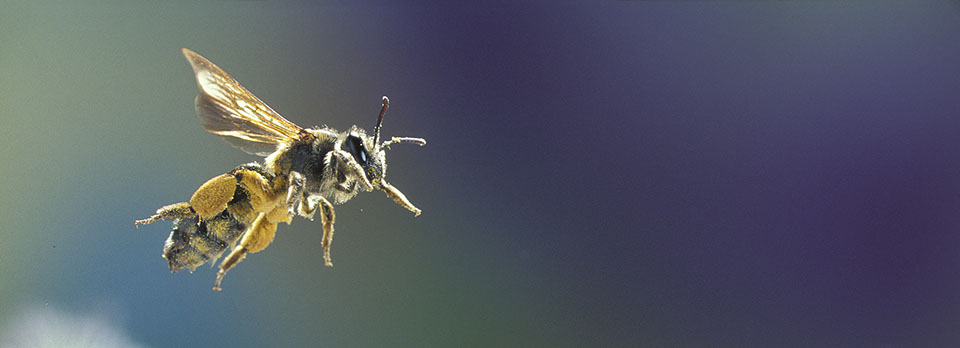
Nic Bishop
Author and Photographer
of Nature Books for Children
High Speed Photography
The jumping spider below is only about half an inch long and it is leaping from one rock to the next. This happens very fast - faster than you can see - so it takes some unusual techniques to capture it. Like many of my high-speed photographs, I took this picture indoors. I used a sensitive laser beam between the rocks and when the spider jumped through it, a detector fired a hand built shutter on the camera. This shutter opens fast, while the spider is still in the air, and triggers several flash guns which produce an incredibly short pulse of light to freeze the spider’s movement.
All this might sound fairly simple, but the laser detector, shutter and flash guns had to be custom built which took about a year and a half. And everything is embarrassingly idiosyncratic. Things frequently break down and getting it all to work again can take days. On top of that, the flash guns rely on dangerously high voltages, which require considerable caution. But the best part is that, with a lot of patience and good measure of luck, I can sometimes get some amazing photographs of ultra-fast action, like this ladybug taking off.
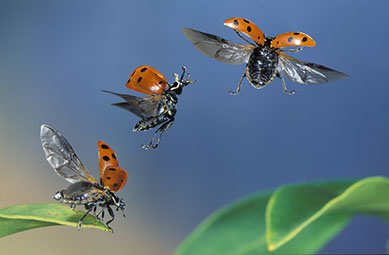
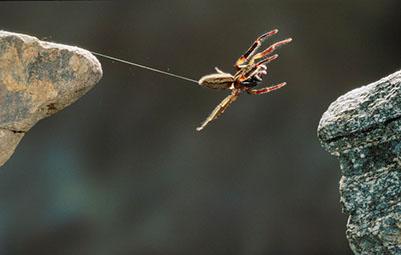
Things get more complicated when trying to capture high-speed subjects like this leaping frog. Because the electronic equipment is so sensitive, and the high voltage is dangerous when water s around, I could not take this picture in a real pond. So I built a pond in a studio. It took a few weeks to set this up, and then I had to train my frog over a couple more weeks. I used a young frog which had an endless appetite, but at first it was a bit too scared of the photo gear. So I trained it to jump for food I held with tweezers, and then slowly put the equipment in place. In the end, the frog got so tame it would jump and grab my fingers if I waved them nearby. Then it took several more days of photography, and lots of caterpillars, before I got the shot I wanted with the tongue reaching out in the perfect position to catch that caterpillar.
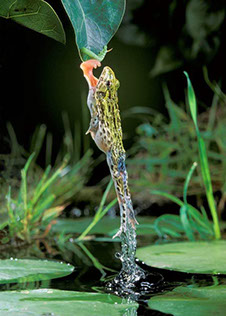
But not everything works …….
Of course, not every photograph works out. When I took the picture below I was trying to photograph an animal called a woylie. This is a rabbit-sized relative of a kangaroo and it only lives in a small part of Western Australia. So I first traveled several thousand miles to find my subject. Then I had to find out how to take the picture. Woylies only come out well after dark , when it is impossible to see them, and they are quite timid in the wild, so do not hang around if you are waiting with a camera. To solve this I set up a camera trap, using an invisible infra red beam and detector (a device called a Mumford Time machine). The idea is that when the animal cuts the beam it triggers a camera which is already focused and wired up with several flash guns to light the scene. I do not even need to be there once it is all set up, since the animal takes its own photograph.
After I had put up my equipment in the forest, I waited some distance away until it got dark. By about 10 pm I could see the flash lights going off like a mini fireworks display. I was very excited! I went back at 3 in the morning to collect my gear I could hardly wait to see the photos. But all I got were these naughty brush-tailed possums that had crashed my photo session. I had used a bait of peanut butter and fish to encourage the woylies to my camera trap. But the only animal that loved this more than a woylie was a brush-tailed possum. You can see that the possum on the left has a sticky dollop of the stuff in its hand. Despite the planning, all I ever got were brush-tailed possums.
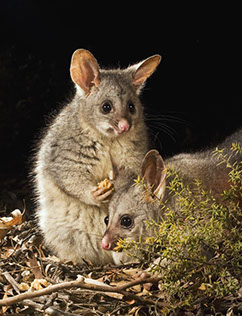
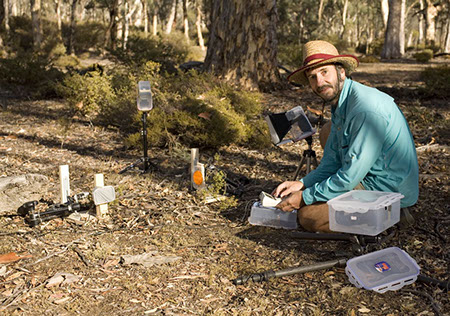
Text and Images - Copyright Nic Bishop
Next page